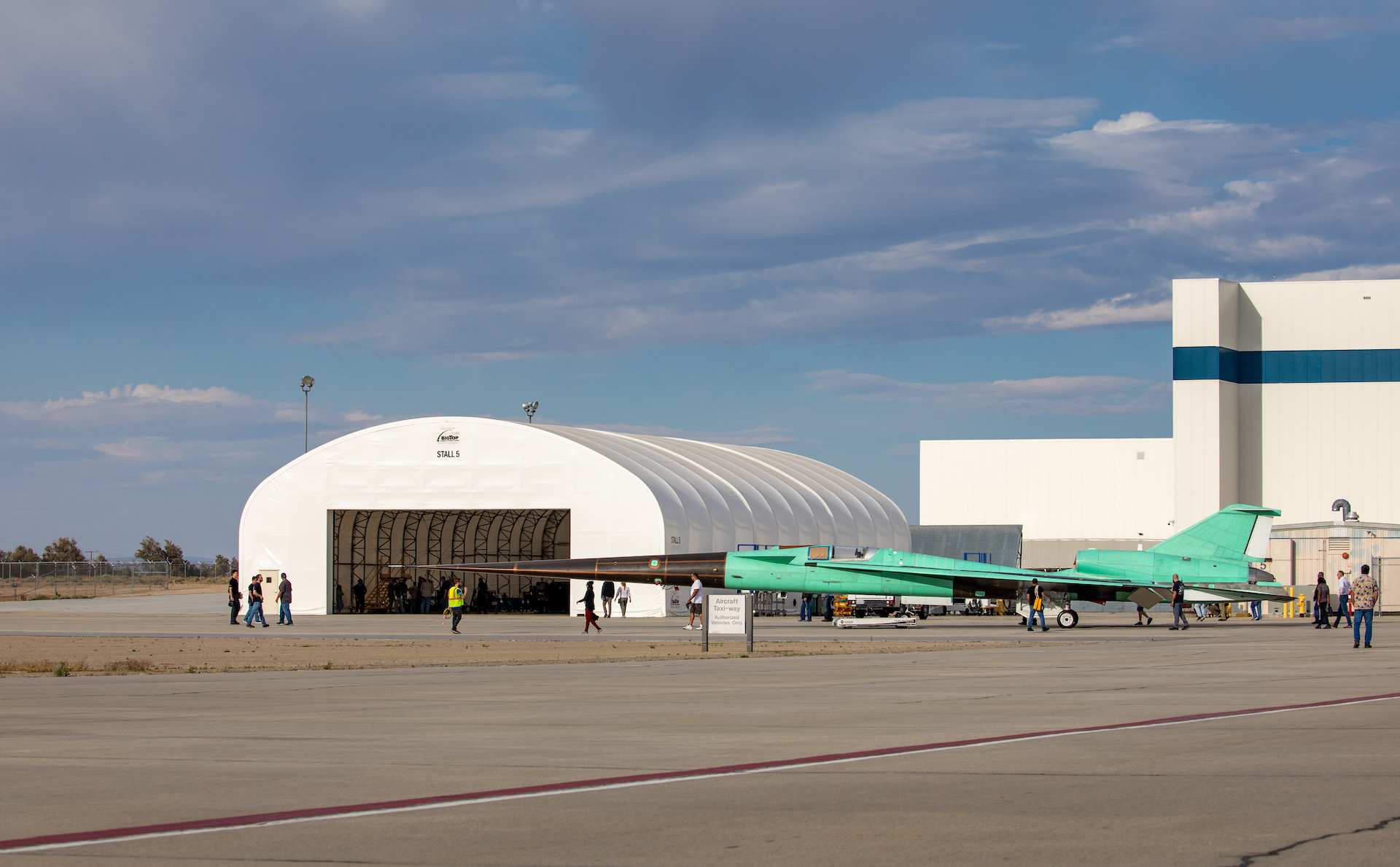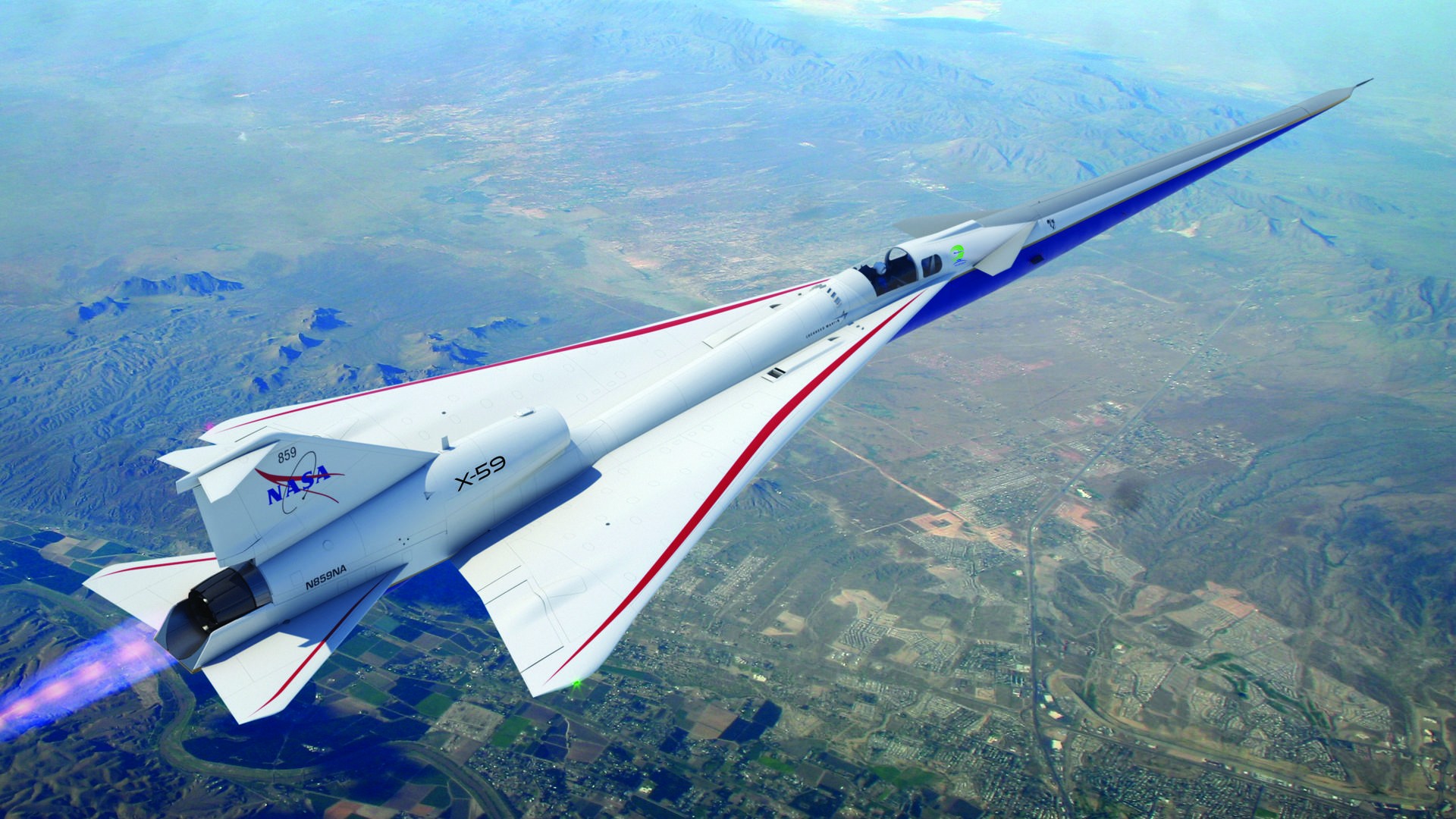NASA will reveal the new X-59 'quiet' supersonic jet today and you can watch live
Update for 5 p.m.: NASA and Lockheed Martin unveiled the X-59 at the Skunk Works facility in Palmdale, California. Read our coverage for details.
It's an aviation-lover's dream today: A new X-plane gets rolled out for the public to finally view.
On Friday (Jan. 12), NASA and Lockheed Martin will unveil the X-59 Quesst, a radical new supersonic jet designed to break the sound barrier without creating a thunderous sonic boom.
"This is the big reveal," said NASA's Catherine Bahm, manager of NASA's Low Boom Flight Demonstrator project and development lead on the X-59, in an agency statement. "The rollout is a huge milestone toward achieving the overarching goal of the Quesst mission to quiet the sonic boom. For the team, some of whom have worked on the aircraft since the first component was created, the reveal of the X-59 will be a very special moment."
NASA will host a free livestream as it rolls the painted X-59 out of the hangar for the first time today. You can watch it here at Space.com beginning at 4 p.m. EST (2100 GMT) courtesy of NASA, or on NASA+ or NASA TV.
Related: Watch NASA's sci-fi-looking X-59 'quiet' supersonic jet roll out of the hangar (video)
The X-59 Quiet SuperSonic Technology (Quesst) jet has been under construction at Lockheed Martin's "Skunk Works" facility in Palmdale, California since 2019. The experimental X-59 Quesst is designed to fly at supersonic speeds and reduce the typical sound of sonic booms, lowering the volume down to a "thump" similar to the sound of a car door slamming. NASA says the aircraft could help reshape regulations that currently prohibit supersonic flight over populated areas due to disruptions that sonic booms can cause.
Breaking space news, the latest updates on rocket launches, skywatching events and more!
The X-59 has been rolled out in front of cameras once before, in August 2023. But that was before the jet had gone into the paint barn for its final red, white and blue paint job, or livery.
During that rollout, the striking and unique geometry of the X-59 was on full display. The aircraft features a sharp, elongated beak-like nose section that measures 38 feet (11.5 meters) in length. The nose section will help shape the shock waves the aircraft produces during flight, NASA said in a 2021 statement.
That nose also means pilots flying the X-59 can't see out of the jet's forward windscreen — because it doesn't have one. Instead, pilots use what NASA calls the External Vision System, or XVS, to see in front of the aircraft. This system uses a forward-facing camera, a cockpit-mounted display screen and custom image processing software to "create an augmented reality view of the X-59 pilot's forward line-of-sight along with graphical flight data overlays," according to a 2019 statement from the agency.
The 99.7-foot-long (30 m), 29.5-foot-wide (9 m) aircraft is designed to reach a speed of Mach 1.4, or 925 mph (1489 kph), while flying at an altitude of 55,000 feet (16,764 m). The X-59 is powered by a single engine built by General Electric Aviation.
As exciting as today's unveiling is, it's only the beginning for the X-59. "Rollout is a major accomplishment, but it also means the next milestone is first flight, and then supersonic flights after that," Bahm said in NASA's statement. "Our eyes are on the mission."
Once it's ready for flight, the X-59 will carry out a research campaign in which it will fly over select residential areas in order to collect data on how people below experience and react to the quieter sonic booms it creates.
NASA will then use that data to seek approval for commercial supersonic flights from regulatory agencies such as the Federal Aviation Administration.

Brett is curious about emerging aerospace technologies, alternative launch concepts, military space developments and uncrewed aircraft systems. Brett's work has appeared on Scientific American, The War Zone, Popular Science, the History Channel, Science Discovery and more. Brett has English degrees from Clemson University and the University of North Carolina at Charlotte. In his free time, Brett enjoys skywatching throughout the dark skies of the Appalachian mountains.



